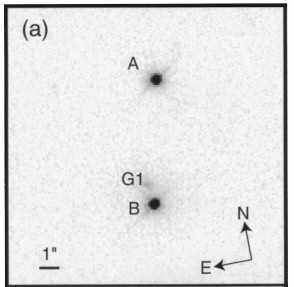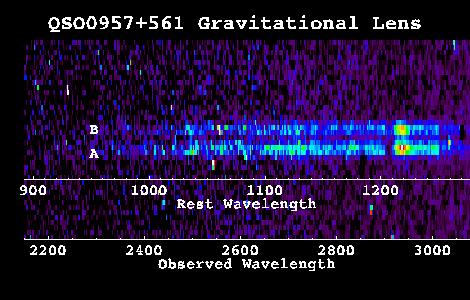

QSO0957+561 was the first system discovered with characteristics consistent with those of a gravitational lens. It consists of two quasar images separated by approximately 6" with essentially identical optical spectra and redshifts (z=1.41). The quasar is multiply imaged by a gravitational lens consisting of a z=0.36 bright cluster galaxy and its associated cluster. The two images (A and B) have similar magnitudes that can vary by a tenth of a magnitude in a timescale of a week.

The 0957+561 lens system as seen in a F555W WFPC2 images, with the A
and B quasar images and the primary lensing galaxy G1 apparent.
From
Bernstein et al. (1997), ApJ 483, L79
In the IUE spectral image shown below the position angle from A to B is roughly aligned with the spectrograph long axis (perpendicular to the dispersion).
Damped Ly-alpha absorption at redshift z(abs) = 1.3911 is present in the spectra of both the A and B components.
The ratio of the flux density in image A to that in image B in late
1993 had a constant value, 1.02, in four different UV bandpass between
1400 A and 3040 A observer's frame. These results are consistent with the
prediction of the gravitation lens interpretation that the photometric
ratio of the images measured simultaneously should be independent of
frequency.

Do you want to know more about the IUE observations of QSO0957+561?